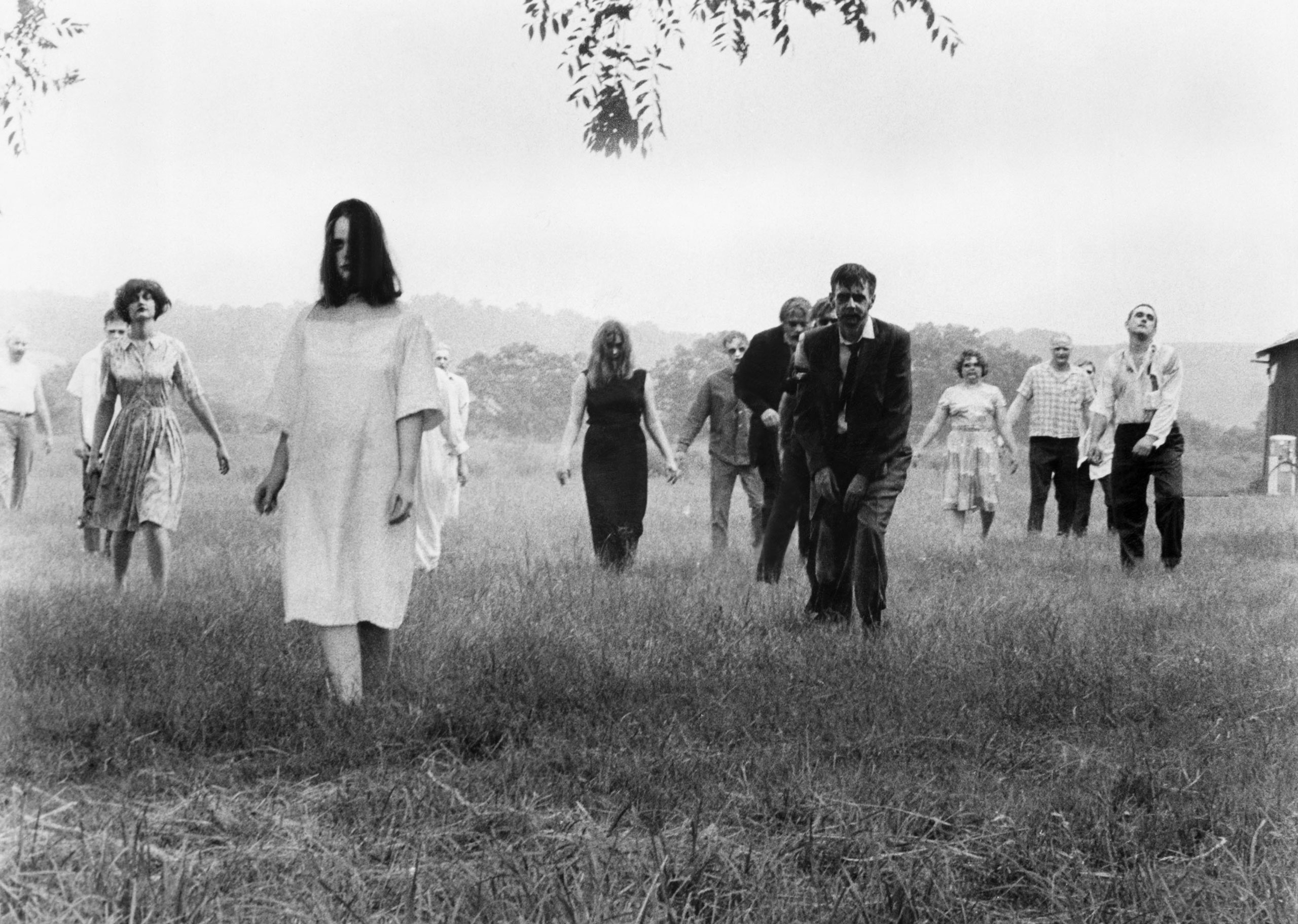George A. Romero’s ultra-low-budget Night of the Living Dead was released in October 1968, just months after the assassination of Martin Luther King Jr., which was shortly followed by that of Robert F. Kennedy. The dream of the Civil Rights Movement seemed to be over. What would America now become? Romero’s debut film offered a possible answer in unsparing black-and-white. Seven people huddle in the house in the country, fending off a group of hungry zombie hordes outside. Of the seven, Ben (Duane Jones) is the only Black man. He’s also the voice of calm and reason in a dire situation, soothing one of the movie’s more fragile characters, Barbra (Judith O’Dea). The white men have refused to help her, and they also view Ben with distrust, even though he’s the one who’s taken the step of blocking the doors and boarding the windows. Soon those desperate zombie hands will claw their way in even so. Their human brains have stopped working; they’re acting only on their rawest impulses. But they can’t leave the world of the living alone, a clear metaphor for the indefinable anxieties tearing at the world—and specifically, maybe, the unrest and wariness of a not-even-close-to-being-integrated country. The world had gone mad, and Romero made a movie about it even as it was happening. This wasn’t the first zombie movie, and over his lifetime Romero continued to revisit the genre, as well as inspiring countless others. But the mournful chill of Night of the Living Dead, an end-of-days movie in all senses of the term, stands apart.
- The 100 Most Influential People of 2024
- Coco Gauff Is Playing for Herself Now
- Scenes From Pro-Palestinian Encampments Across U.S. Universities
- 6 Compliments That Land Every Time
- If You're Dating Right Now, You're Brave: Column
- The AI That Could Heal a Divided Internet
- Fallout Is a Brilliant Model for the Future of Video Game Adaptations
- Want Weekly Recs on What to Watch, Read, and More? Sign Up for Worth Your Time
